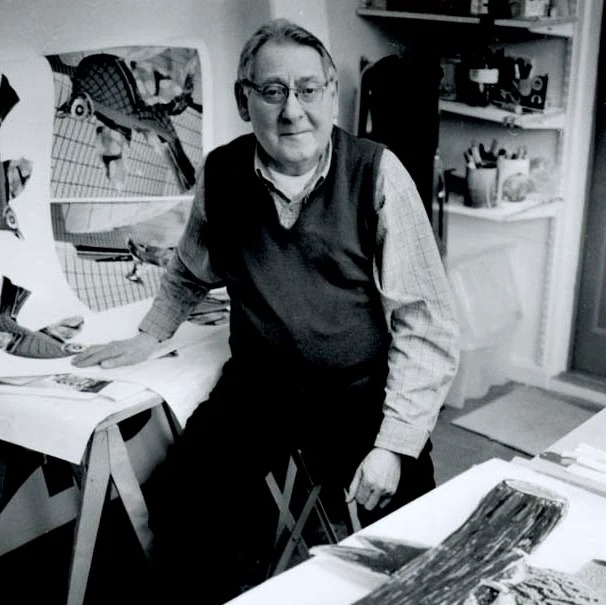
Ivor Abrahams
Biography of Ivor Abrahams
Sculptor Ivor Abrahams was born to Jewish parents in Wigan, Lancashire, England, in 1935. He moved to London in 1952 to study at St. Martin's School of Art (1952-53) and then at Camberwell School of Art (1954-57). After completing his studies, he traveled extensively and pursued a career in teaching.
In the 1950s, he worked as a display artist for Adel Rootsteine. He was fascinated by advertising placards, which reflected his ongoing exploration of surface texture and illusion. He also apprenticed at the Fiorini Art Bronze Foundry, which cast some of his work and gained international recognition through an exhibition with Peter Blake in 1960.
Abrahams's early bronzes were exhibited as a group in his first solo exhibition at London's Gallery One in 1962. Subsequently, he made a significant shift in his practice, working directly in plaster and latex and adopting a 'figure and ground' format, influenced by his interest in de Chirico. Abrahams was elected to the Royal Academy in 1989.
The artist passed away in London in 2015. His work is featured in over 30 national and international collections, including the Arts Council, the British Council, the Royal Academy, Tate, the Cass Sculpture Foundation (Goodwood), and MoMA, New York. Some of his notable exhibitions include the Henry Moore Institute, Leeds (2007); the Royal Academy of Arts (1999); Bernard Jacobson Gallery, London; Galeries Salis, Salzburg (1991); Miriam Shiell Fine Art, Toronto (1989); and Galerie Albrecht, Munich (1987).
Ivor Abrahams's Art Style
In the late 1960s, while exhibiting alongside emerging British Pop artists, Abrahams charted his unique artistic course. The initially bright and colorful Pop imagery evolved into something more ironic, sinister, and less overt. This effect was further heightened by the artist's renowned technique of painted sculpture, blurring the line between 2D and 3D art, not entirely belonging to either category. His use of flock paper and photo collage was partly driven by his color blindness, compelling him to exploit the texture and materials of 3D art to the fullest.
Many of Abrahams's sculptures were cast in bronze, combining its durability with color, wit, and motion. His sculptures often originated from drawing, cutting, and collage, just as much as from traditional modeling. Abrahams once stated that "cut-outs in my work are the fulcrum on which everything pivots." As the Head of Sculpture at the R.A School, sculpture became the medium through which he best expressed his ideas.
Years:
Born in 1935
Country:
United Kingdom, Wigan
Gallery: